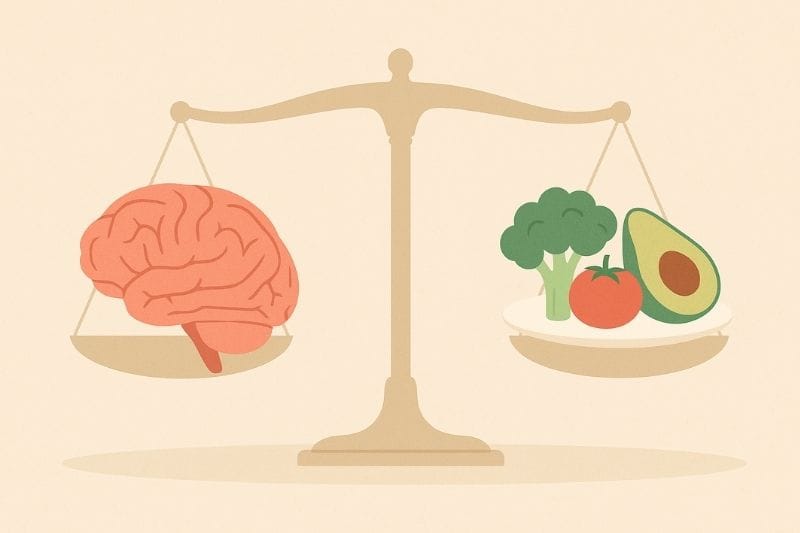Steps and walking is something I get asked about all the time within my work as an online weight loss accountability coach. I’ve lost weight twice in my life. The first time I did it, the only exercise I did was long walks. For the last decade, I lost my weight and have kept it off through a combination of eating well, walking, cycling and lifting weights. I really love walks, so walking has been an important part of my own weight loss journey.
So, yes, walking 10,000 steps a day can help with weight loss, when combined with a healthy, calorie-controlled diet. On average, 10,000 steps burns around 300 to 500 extra calories, depending on your weight, speed, and walking terrain. Over time, that extra activity can make a noticeable difference.
But you don’t have to hit exactly 10,000 steps to see results. Some people lose weight with fewer steps, while others may need more depending on their lifestyle and calorie intake. The key is consistency, movement, and finding a routine that fits into your daily life.
If weight loss is your goal, 10,000 steps is a great place to start – but it’s only part of the picture. Combining it with strength training, balanced nutrition, and good sleep will give you the best results.
Curious how to make your steps count more – or what to do if you fall short some days? Keep reading for practical tips that actually work.
Where Did 10,000 Steps Come From?
Believe it or not, the 10,000-step rule didn’t emerge from a scientific breakthrough or groundbreaking health study. It all started in 1965 in Japan with a pedometer called the “Manpo-kei,” which translates to “10,000 steps meter.” The device was marketed with the idea that 10,000 steps a day would help maintain health and prevent weight gain.
The number itself was more about clever marketing than solid science. It’s catchy, sounds impressive, and fits neatly into a day of moderate activity. Over time, the idea spread globally, and the 10,000-step goal became a standard recommendation from fitness apps, health professionals, and public health campaigns.
The Benefits of Walking 10,000 Steps a Day
Even if 10,000 isn’t a scientifically perfect number, it’s hard to argue against the benefits of walking. Regular movement is great for your body and mind, and walking is one of the simplest and most accessible ways to stay active.
1. Supports Heart Health
Walking is fantastic for your cardiovascular health. It helps lower blood pressure, improves circulation, and reduces your risk of heart disease. Whether it’s a brisk walk or a slow stroll, your heart appreciates the effort.
2. Boosts Mental Health
Ever noticed how a walk can clear your head? Regular walking reduces stress, improves mood, and can even help with anxiety and depression. There’s something magical about stepping away from your desk or screens and getting outside.
3. Helps with Weight Management
While walking isn’t the most intense calorie burner, every step counts. Ten thousand steps equate to roughly 5 miles (depending on your stride), which can burn between 300–500 calories for most people. Combine that with a balanced diet, and it’s a great way to help to manage your weight.
4. Improves Overall Fitness
Walking strengthens some muscles, improves endurance, and helps with joint health. Over time, it can also enhance balance and coordination, which is especially beneficial as you age.
5. Accessible for Everyone
You don’t need a gym membership, expensive equipment, or fancy trainers to get started. Walking is low-impact and adaptable for all fitness levels.
The Myths About 10,000 Steps
With the benefits clear, it’s easy to see why 10,000 steps became so popular. But let’s bust a few myths while we’re at it.
Myth 1: You Need 10,000 Steps to Be Healthy
The truth? Any movement is better than none. If you’re currently walking 2,000 steps a day, doubling that to 4,000 will already provide health benefits. The key is consistency and gradually building up your activity levels.
Myth 2: It’s the Only Number That Matters
Steps are just one part of the bigger fitness picture. Strength training, stretching, and high-intensity workouts are all important too. Walking 10,000 steps a day is great, but it’s not the whole story.
Myth 3: More Steps Are Always Better
While walking is low-impact, it’s still possible to overdo it. If you’re walking tens of thousands of steps daily and ignoring pain or fatigue, it could lead to injuries or burnout. Balance is key.
Why 10,000 Steps Isn’t for Everyone
Life isn’t one-size-fits-all, and neither is fitness. Here are some reasons why you might aim for fewer (or more) steps:
1. Different Lifestyles
A busy office worker might struggle to hit 10,000 steps daily, whereas a nurse or delivery driver might easily smash that target. The point is to find a goal that suits your lifestyle.
2. Fitness Levels and Goals
For someone new to exercise, 10,000 steps might feel overwhelming. Starting with 3,000 or 5,000 and working up is more realistic and sustainable. On the flip side, if you’re training for a marathon, you’ll probably exceed 10,000 without even thinking about it.
3. Health Conditions
Chronic pain, joint issues, or certain health conditions might make walking 10,000 steps challenging or even unwise. It’s always best to tailor activity to your individual needs.
Finding Your Own Target
So, how many steps should you aim for? The answer depends on your goals, current activity level, and how walking fits into your life.
- For Beginners: Start with a baseline. Use a pedometer or phone app to track your current steps for a week. Then aim to increase by 1,000–2,000 steps daily until you find a routine that works.
- For Weight Loss: While 10,000 steps may help with weight management, pairing it with strength training and a healthy diet will yield much better results.
- For Mental Health: Don’t worry too much about numbers. A 20–30 minute walk outdoors can do wonders for your mood, whether that’s 3,000 steps or 6,000.
- For Heart Health: Studies suggest that even 7,000–8,000 steps daily can significantly reduce the risk of cardiovascular disease.
Tips for Getting More Steps
If you’re aiming to up your daily step count, here are some easy ways to sneak in more movement:
- Take the Stairs: Skip the lift or escalator.
- Park Further Away: At work, the shops, or anywhere you drive.
- Walking Meetings: Swap a sit-down chat for a stroll.
- Walk During Calls: Pace around the room while on the phone.
- Break It Up: Aim for three 10-minute walks instead of one long session.
So, the 10,000-step rule is a helpful guideline, not a strict rulebook. It encourages movement, which is always a good thing, but it’s not the be-all and end-all of fitness.
At the end of the day, the best activity is the one you enjoy and can stick with. Whether that’s 5,000, 10,000, or 15,000 steps a day, every little bit counts towards a healthier, happier you.
So lace up your trainers, get out there, and find the step goal that works for you. Because the real magic number? It’s the one that gets you moving.
I can help you…
I am a Weight Loss Coach, successfully helping people just like you to lose weight and keep it off:
I am a Fitness, Strength and Nutrition Coach for sports events and athletes – helping people like you to get fitter, stronger and faster:
I am a Menopause Support Coach, find out more about how I can help you:
Want to get stronger, fitter or gain muscle?




